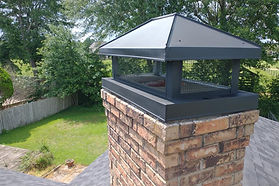
Homeowners often overlook the chimney when it comes to routine maintenance, assuming it’s functioning properly as long as smoke is exiting the flue. However, chimneys require regular attention to remain safe and efficient. Ignoring the early signs of chimney trouble can lead to structural damage, poor indoor air quality, or even dangerous house fires. It’s important to recognize when your chimney needs immediate cleaning or repair, so you can avoid costly and hazardous outcomes.
One of the most common and easily noticed signs is a strong, unpleasant odor coming from the fireplace. This often indicates a significant buildup of creosote, a highly flammable substance that forms when wood burns. Even if you haven't used your fireplace in months, the presence of creosote or other debris can cause lingering smells that may worsen in humid conditions. This odor is a serious red flag that your chimney needs cleaning as soon as possible.
Another clear sign is visible soot or creosote inside the fireplace or around the damper. If you notice thick, black, tar-like deposits, it’s time to call a professional chimney sweep. These deposits not only reduce airflow but also dramatically increase the risk of a chimney fire. Even a thin layer of creosote can be dangerous over time, so regular inspections and cleanings are essential.
Excessive smoke entering your home when using the fireplace is another urgent warning. If smoke isn’t venting properly through the chimney, it could indicate a blockage, such as animal nests, leaves, or soot buildup. Smoke inhalation can lead to serious health issues, and any sign of improper ventilation should be addressed immediately by a certified chimney expert.
A damaged this website cap or cracks in the masonry are also signs that your chimney may need immediate repair. Water infiltration due to missing or cracked chimney caps can lead to internal damage, mold growth, and deterioration of the flue lining. Loose bricks or crumbling mortar are structural concerns that compromise the chimney’s integrity and can lead to partial or total collapse if left unattended.
A sudden drop in heating efficiency or a noticeable draft near your fireplace could also suggest problems in your chimney system. This might be due to obstructions or damaged flue liners that prevent proper airflow. If your energy bills are higher than usual or your living space doesn’t stay warm, your chimney may be to blame.
Finally, if you hear animal noises or notice debris falling into your fireplace, it’s another sign your chimney is compromised. Birds, squirrels, and raccoons often take shelter in chimneys, and their presence can create blockages or structural damage that require immediate professional attention.
In conclusion, keeping your chimney clean and in good repair is critical for home safety. From strange odors and visible creosote to poor ventilation and physical damage, these warning signs should never be ignored. Scheduling an annual inspection and responding promptly to any issues ensures your chimney remains a safe and functional part of your home.
